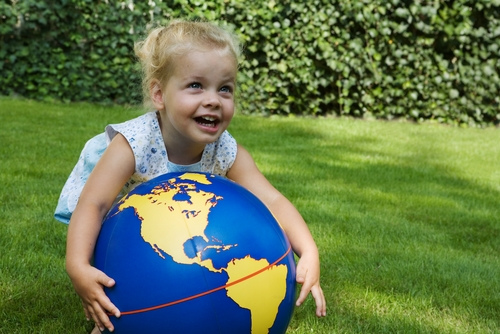Whether you’re shopping for your own child, getting a birthday gift for an eco-conscious friend or family member’s son or daughter, or you’re planning an environmentally friendly nursery, the whole process can be confusing. From plastics made of recycled products to upcycled items and toys made from renewable materials, there are many choices to consider. When making a decision about eco-friendly products for a child this guide will help you make a wise purchase.
Determining What Is Eco Friendly
Many product packaging labels bear the words “eco-friendly”, “environmentally friendly”, “natural” or “green”. The overuse and lack of regulation over these terms can make selecting eco-friendly products for children a challenge even if you’re a well-informed parent and consumer, explains the Poughkeepsie Journal. According to this article by the Consumer Reports Greener Choices Food Safety & Sustainability Center, one way that parents can look into product packaging is to use their online tool while internet shopping at home or use it on a smart phone or tablet while shopping in a store.
Upcycle, Recycle, or Buy New?
The tenets of environmental friendliness are reduce, reuse and recycle. The upcycling trend has been hot for a few years now, with homeowners and hobbyists taking something old, like a picture frame or chest of drawers, and turning it into something new, like nursery decor or a play kitchen. The USA.gov website explains that this type of recycling is one of the best ways to reduce your impact on the environment. Just be sure to use safe paints, lead-free knobs and other environmentally friendly choices when putting your touch on the item. If you can’t find what you need on the used market, you can look to inexpensive yet environmentally friendly new options and “hack” them into just what you need, such as using metal storage lockers as a way to hide your child’s toys or some other mess that you’d prefer remain unseen by guests, suggests the Homes Alive blog.
Are Eco Friendly Products Worth the Bigger Price Tag?
Many parents are disappointed to find that natural, organic and green products cost twice as much or even more than the “regular” version. According to this article on NBC News, consumers should consider which eco-friendly children’s products mean the most to them. Spending more on organic foods and treats may mean spending less on clothing or toys. For example, buying used clothing for your kids allows you to save money, recycles consumer goods, and any chemicals in the clothing have already off-gassed. You can allocate the money you saved by buying used clothes to purchase sulfate-free and paraben-free shampoo.
Getting the Most Bang for Your Bucks
Understanding what product labels mean and carefully reading ingredients lists will help you make an informed decision when buying items for your kids. Consider what’s most important to you and dedicate your budget to it. You can save in other areas while still remaining eco-friendly.
